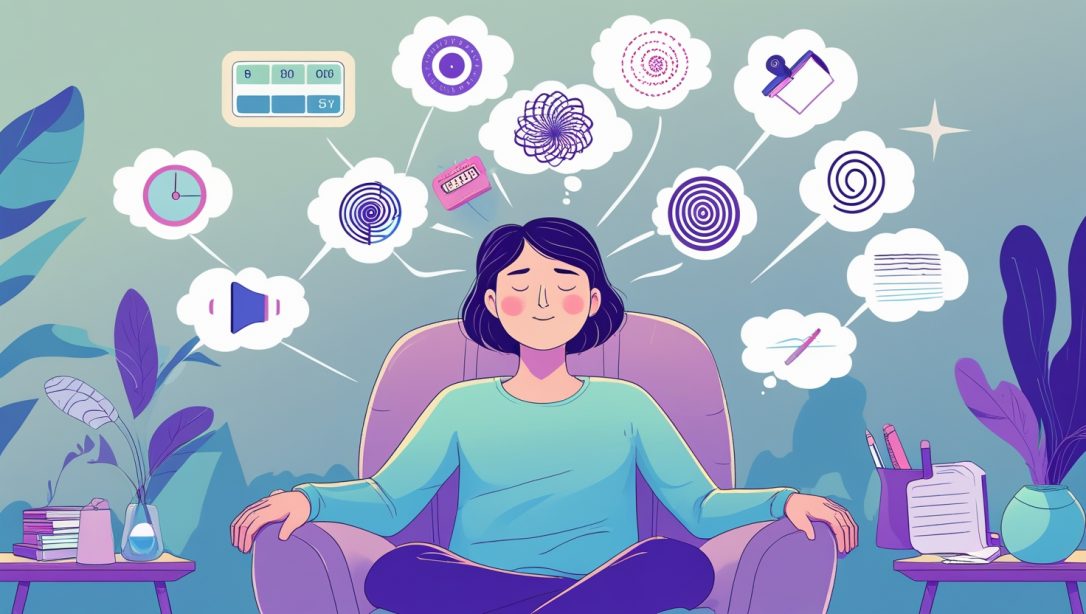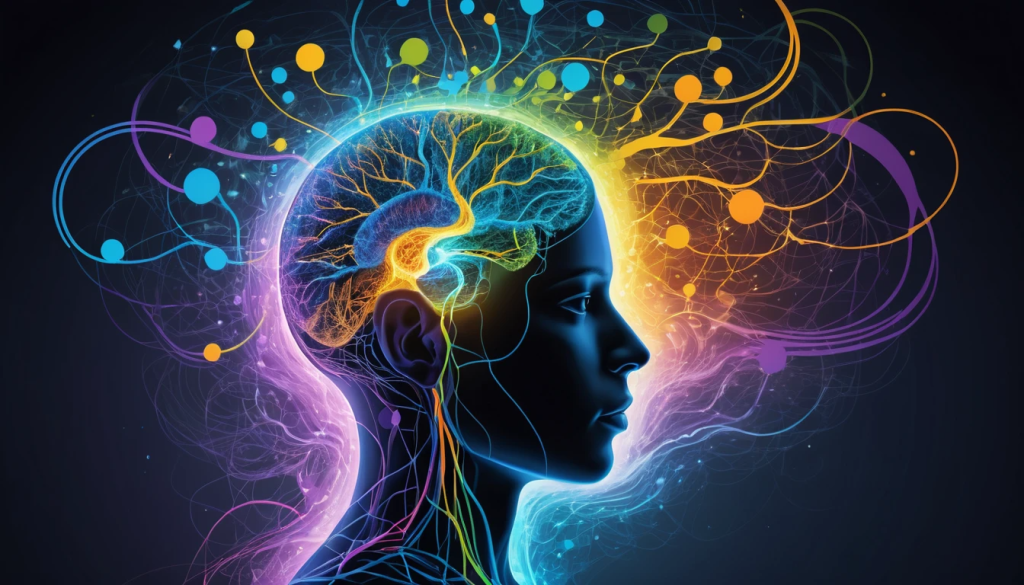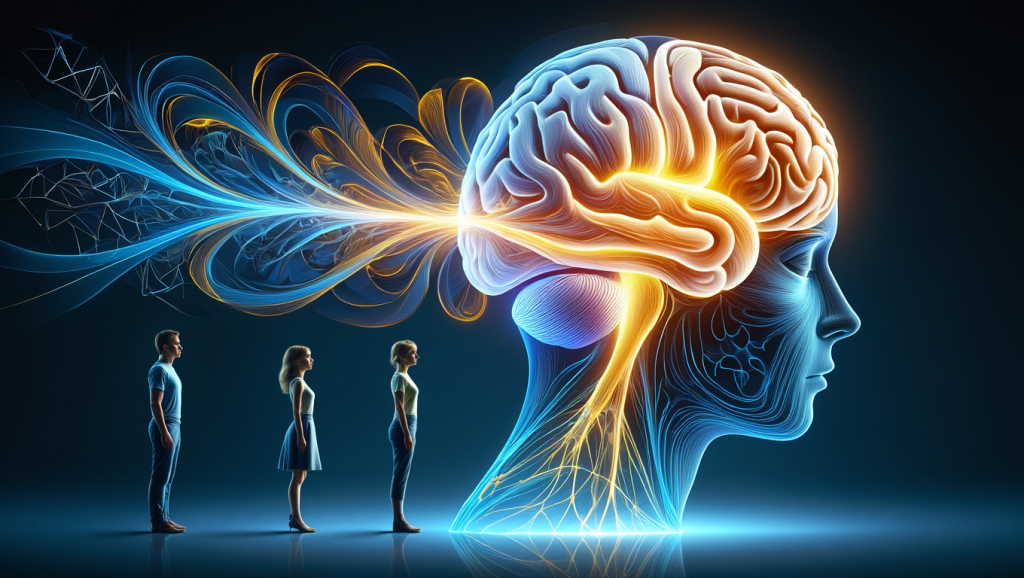Self-hypnosis is like having a master key to your subconscious mind—once you learn the techniques, you can unlock profound changes in your habits, thoughts, and even physical responses. The beauty of self-hypnosis lies in its accessibility; you don’t need special equipment or years of training to experience significant benefits.
In this guide, we’ll explore nine science-backed techniques for practicing self-hypnosis at home, with variations for both analytical and non-analytical mind types. These methods have been refined through decades of clinical research and practice, offering you reliable pathways to tap into your mind’s remarkable potential for change.
Prerequisites for Effective Self-Hypnosis
Before diving into specific techniques, several foundational elements will enhance your success:
1. A Quiet, Comfortable Environment Create a space where you won’t be disturbed for at least 15-20 minutes. Silence your phone and ensure the room temperature is comfortable.
2. A Clear, Specific Goal Vague intentions produce vague results. Instead of “I want to feel better,” try “I want to feel calm and confident during my presentation on Friday.”
3. Proper Positioning Sit in a comfortable chair with your head supported and arms resting comfortably. Avoid crossing your limbs as this can create tension points.
4. Openness and Expectation Approach self-hypnosis with positive expectancy and openness. Research shows that believing in the process significantly enhances results.
Technique 1: Progressive Relaxation Method
This classic approach is particularly effective for non-analytical types but can benefit anyone experiencing tension or stress.
The Basic Method:
- Close your eyes and take three deep breaths.
- Beginning with your toes, consciously relax each muscle group in your body.
- Work upward—feet, calves, thighs, abdomen, chest, hands, arms, shoulders, neck, and finally face.
- With each area, tense the muscles slightly for 3 seconds, then release, noticing the difference between tension and relaxation.
- Once fully relaxed, introduce your prepared suggestions.
For Analytical Types: Count backward from 10 to 1 between each muscle group, creating a structured framework for the relaxation process.
For Non-Analytical Types: Visualize a wave of warm, colored light flowing through your body, dissolving tension as it travels from toes to head.
Technique 2: The Countdown Method
This numerical technique leverages the association between descending numbers and deepening relaxation.
The Basic Method:
- Close your eyes and take a deep breath.
- Begin counting backward from 100, visualizing each number as you go.
- Imagine each number appearing and then fading, taking you deeper with each descent.
- If your mind wanders, gently return to the last number you remember.
- Around number 50-30 (varies by individual), introduce your suggestions.
- Complete the session by counting up from 1 to 5, becoming more alert with each number.
For Analytical Types: Make the countdown more engaging by subtracting irregular numbers (e.g., 100, 97, 93, 88…) or visualizing each number in different fonts or colors.
For Non-Analytical Types: Associate each number with a deepening sensation, such as sinking into a comfortable cloud or descending a beautiful staircase.
Technique 3: The Theater of the Mind
This powerful visualization technique uses your brain’s inability to distinguish between vividly imagined experiences and real ones.
The Basic Method:
- After entering a relaxed state through any induction method, imagine sitting in a comfortable theater.
- Visualize a large screen in front of you.
- On this screen, project an image of yourself having already achieved your desired outcome.
- Make this image as detailed as possible—notice your posture, facial expression, clothing, surroundings.
- Step into this image, experiencing the emotions, sensations, and thoughts of your successful self.
- Spend 5-10 minutes fully immersed in this experience.
For Analytical Types: Create a split-screen effect, with your current state on one side and your desired state on the other, noting specific, measurable differences between them.
For Non-Analytical Types: Add sensory richness by incorporating sounds, physical sensations, and emotions into your visualization, making it feel increasingly real.
Technique 4: Recorded Self-Hypnosis Sessions
Using your own voice to create guided sessions can be extremely effective since you naturally respond to your own suggestions.
The Basic Method:
- Write a script incorporating relaxation instructions and your specific suggestions.
- Record yourself reading the script slowly, with a calm, confident voice.
- Include a proper induction at the beginning and emergence instructions at the end.
- Listen to your recording in a comfortable position when you won’t be disturbed.
- Update your recording every 21 days to address new goals or refinements.
For Analytical Types: Include logical explanations and evidence for why your suggested changes make sense, appealing to your rational mind.
For Non-Analytical Types: Add background music or nature sounds that evoke the emotional state you wish to achieve.
Technique 5: The Six-Step Visualization Process
This structured approach ensures your self-hypnosis sessions include all essential elements for effective subconscious reprogramming.
The Basic Method:
- Create a simple, believable suggestion that is:
- Measurable (specific outcomes)
- In present tense (“I am” not “I will be”)
- Positively framed (what you want, not what you don’t want)
- Associated with a reward or benefit
- Enter a relaxed state using your preferred induction method.
- Repeat your suggestion while visualizing yourself embodying this new reality.
- Engage all senses: see, hear, feel, and even smell and taste elements of your visualization.
- Generate positive emotions associated with your success.
- Add a “future memory” of continuing this success tomorrow and beyond.
For Analytical Types: Create a structured, sequential visualization with clear cause-and-effect relationships.
For Non-Analytical Types: Focus more on the emotional experience and sensory richness of your visualization.
Technique 6: Autogenic Training
This technique, developed by German psychiatrist Johannes Schultz, uses a series of physical suggestions to induce deep relaxation and receptivity.
The Basic Method:
- Sit comfortably with eyes closed.
- Repeat each of the following phrases 3-5 times, focusing on the sensation:
- “My arms and legs are heavy and warm”
- “My heartbeat is calm and regular”
- “My breathing is deep and effortless”
- “My solar plexus is warm”
- “My forehead is cool”
- “My mind is quiet and still”
- After completing these cycles, introduce your specific suggestions.
- End with: “When I open my eyes, I will be alert, refreshed, and positive.”
For Analytical Types: Count your breath between phrases and note the physical changes occurring with each suggestion.
For Non-Analytical Types: Visualize each bodily sensation as colored energy flowing through the mentioned areas.
Technique 7: The Mindful Awareness Method
This technique bridges meditation and self-hypnosis, using present-moment awareness to access the suggestible hypnotic state.
The Basic Method:
- Focus on your breathing for 2-3 minutes without attempting to change it.
- Expand awareness to include bodily sensations, simply observing them.
- Notice thoughts arising without judgment, allowing them to pass like clouds.
- As your mind quiets, gently introduce your prepared suggestion.
- Return to breath awareness whenever your mind wanders.
- End by expressing gratitude for this time of inner connection.
For Analytical Types: Count your breaths in cycles of 10, noting how the quality of your awareness shifts through the exercise.
For Non-Analytical Types: Visualize your thoughts as leaves floating down a stream, creating distance between yourself and mental chatter.
Technique 8: Behavior Anchoring
This neurolinguistic programming (NLP) technique creates powerful associations between physical triggers and desired mental states.
The Basic Method:
- Enter a relaxed state using any induction method.
- Vividly recall or imagine a time when you felt exactly how you want to feel (confident, calm, motivated, etc.).
- When this feeling reaches its peak, create a physical “anchor” by pressing your thumb and forefinger together in a specific way.
- Release the anchor as the feeling subsides.
- Repeat 3-5 times, using the same physical gesture each time.
- Test the anchor by pressing your fingers together and noticing the emotional response.
- Practice triggering this anchor regularly throughout your day.
For Analytical Types: Create multiple anchors for different emotional states, categorizing them systematically.
For Non-Analytical Types: Enhance the anchor by associating a color or internal sound with the desired feeling.
Technique 9: The Writing Method
This approach harnesses the power of writing as a form of self-hypnosis, creating direct communication with your subconscious mind.
The Basic Method:
- Sit at a desk with pen and paper (not digital).
- Take several deep breaths and close your eyes for 2 minutes.
- Open your eyes and write a letter to yourself, dated one year in the future.
- Write from the perspective of having already achieved your goals, describing in detail how your life has improved.
- Read this letter aloud to yourself before sleep for 21 consecutive days.
- After 21 days, seal the letter and set a calendar reminder to open it in six months.
For Analytical Types: Include specific metrics and milestones in your future letter, creating a clear roadmap.
For Non-Analytical Types: Infuse your writing with emotional language and sensory details, describing how success feels.
How to Structure a Complete Self-Hypnosis Session
For best results, combine these techniques into a structured session:
1. Preparation (2-3 minutes)
- Set your intention
- Eliminate distractions
- Get comfortable
2. Induction (5-7 minutes)
- Use Progressive Relaxation, Countdown, or your preferred method
3. Deepening (3-5 minutes)
- Count down from 10 to 1
- Visualize descending stairs or an elevator
- With each step, suggest “deeper and deeper relaxation”
4. Suggestion Phase (5-10 minutes)
- Deliver your prepared suggestions
- Use Theater of the Mind or Six-Step Visualization
- Repeat key phrases 3-5 times
5. Future Pacing (2-3 minutes)
- Imagine yourself tomorrow, successfully implementing these changes
- Create a vivid mental rehearsal of future success
6. Emergence (1-2 minutes)
- Count from 1 to 5
- With each number, suggest increasing alertness
- At 5, affirm feeling refreshed and positive
Tracking Your Progress
Research shows that measuring results significantly improves self-hypnosis outcomes. Consider keeping a journal to record:
- Which technique you used
- How deeply relaxed you felt (1-10 scale)
- Any insights or experiences during the session
- Observable changes in thoughts, feelings, or behaviors afterward
Use this data to refine your approach, focusing more on techniques that work best for you.
Common Challenges and Solutions
Challenge: “My mind keeps wandering” Solution: Expected and normal. When you notice wandering, gently return to your process without self-criticism. Each return actually strengthens your mental discipline.
Challenge: “I’m not sure if I’m doing it right” Solution: There’s no single “right” feeling. Instead, look for results in your daily life. Are you making progress toward your goal?
Challenge: “I fall asleep during sessions” Solution: Try practicing earlier in the day, sitting upright rather than lying down, or setting a gentle alarm for 15 minutes.
Challenge: “I’m too analytical to visualize effectively” Solution: Focus on conceptualizing rather than seeing. Knowledge-based suggestions often work better than visual ones for analytical types.
Conclusion: Consistent Practice Yields Results
Like any skill, self-hypnosis improves with regular practice. Research suggests that 21 consecutive days of practice creates optimal conditions for forming new neural pathways and habits.
Start with just one technique that resonates with you, practice it daily for three weeks, then evaluate your results. You may find that different techniques work better for different goals, allowing you to build a personalized toolkit for mental reprogramming.
In our next post, we’ll explore how to create powerful, effective self-hypnosis scripts tailored to your specific goals.
Have you tried any of these self-hypnosis techniques before? Which approach seems most appealing to your learning style? Share your thoughts in the comments below!
Disclaimer: While self-hypnosis is generally safe for most people, those with certain psychiatric conditions or seizure disorders should consult a healthcare provider before practicing. Self-hypnosis is a complementary approach and not a replacement for professional medical or psychological treatment.







